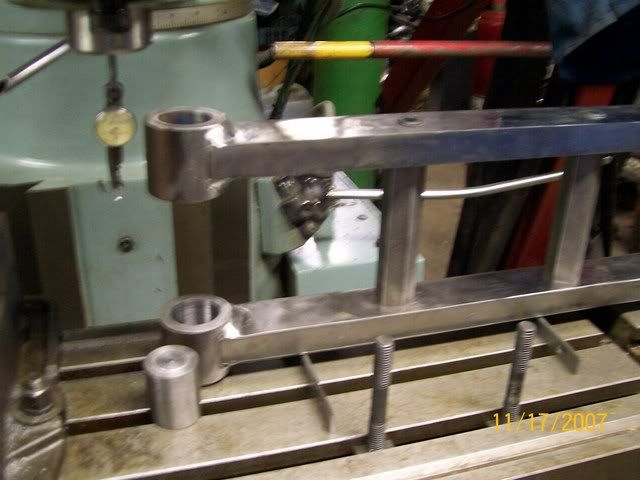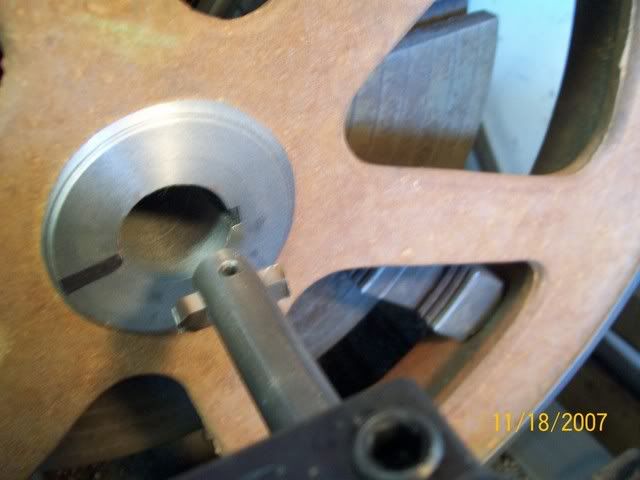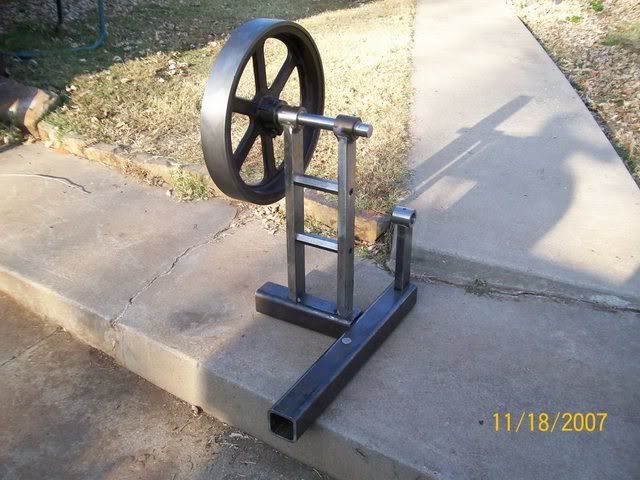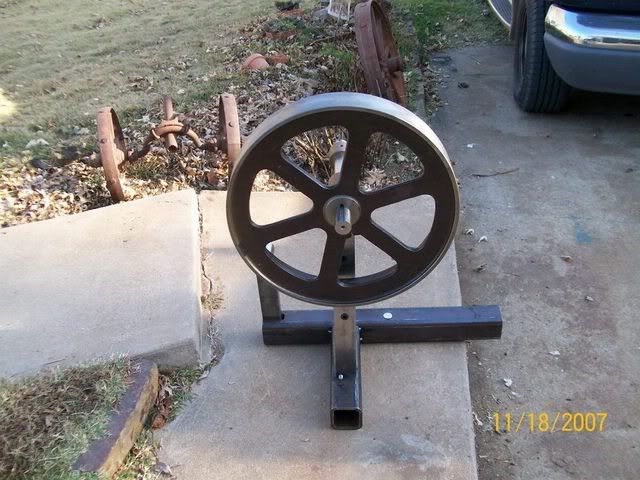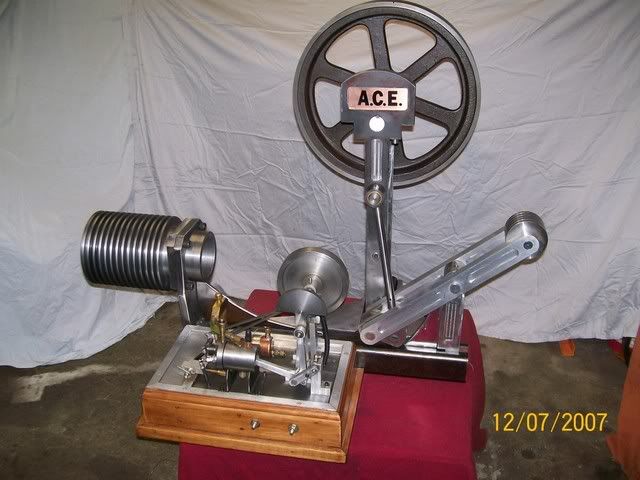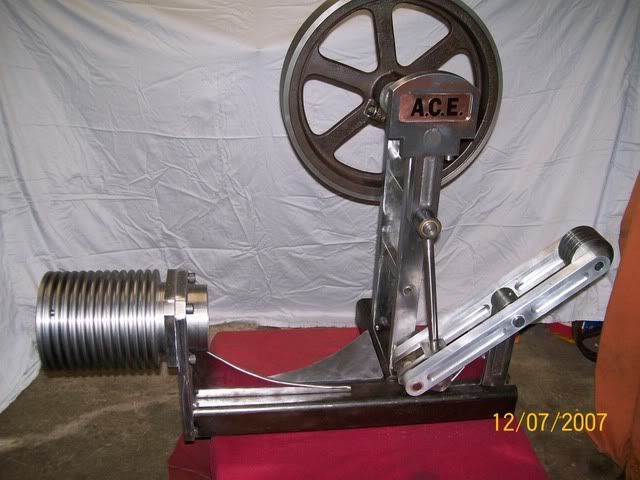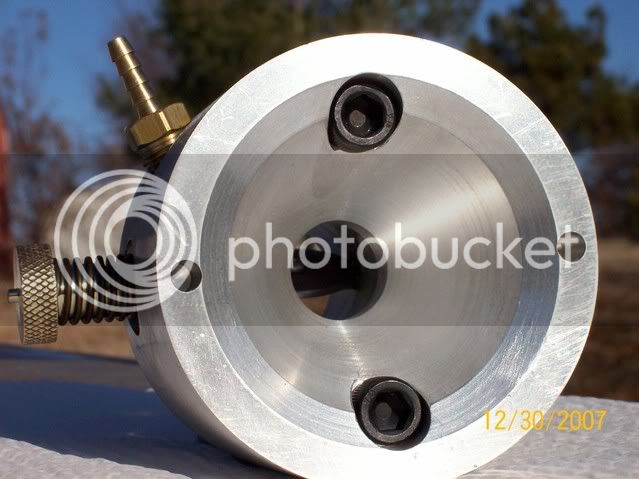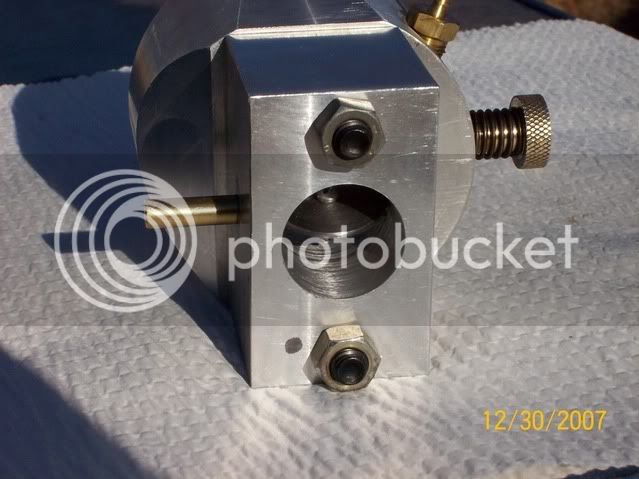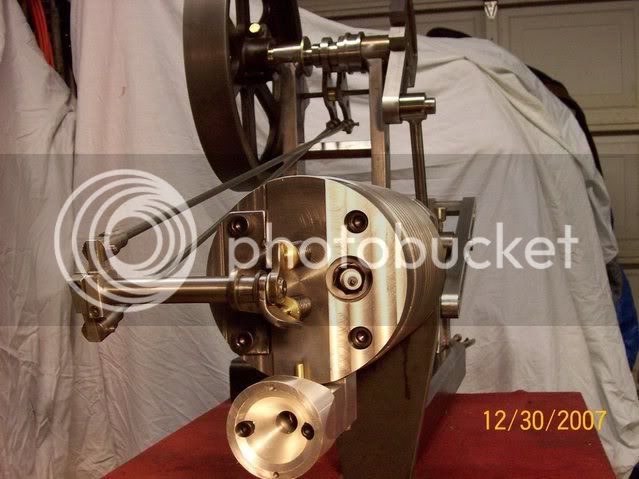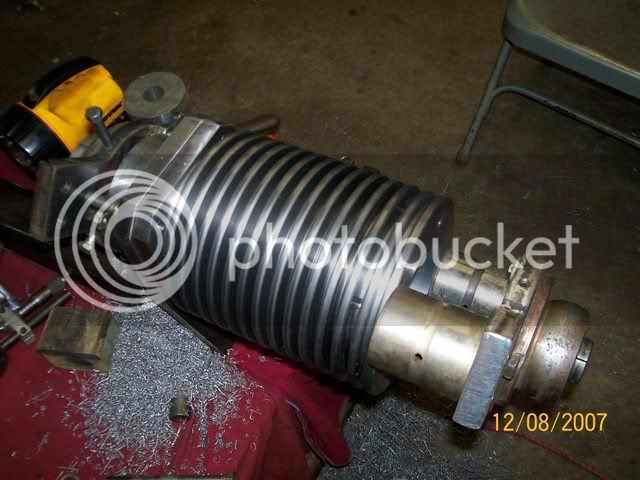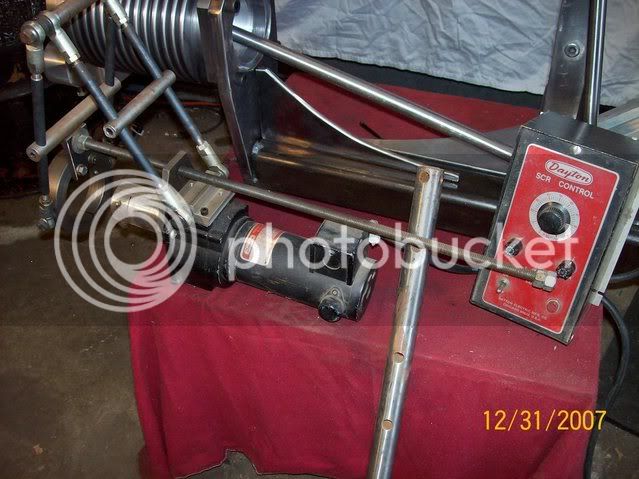I have started a new project and thought I would share it with you. I am building a large Akinson Cycle Engine to power a small ride on tractor.
What I have is a flywheel that I am going to build a engine to fit . :roll: I have the frame all most done and will post pictures when I get it further along. Here is a picture of the flywheel it was a raw casting . I hade to grind the spur off of the outer rim to get it to fit in the lathe.The flywheel is 18" dia. 57 lbs. Is this a model it is being built from bar stock?
Tom
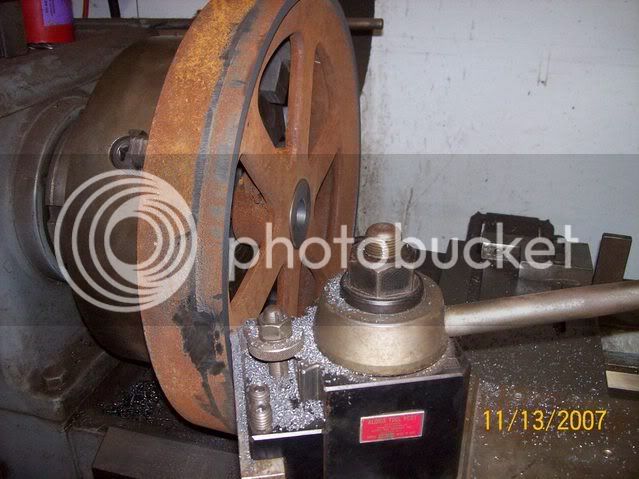
What I have is a flywheel that I am going to build a engine to fit . :roll: I have the frame all most done and will post pictures when I get it further along. Here is a picture of the flywheel it was a raw casting . I hade to grind the spur off of the outer rim to get it to fit in the lathe.The flywheel is 18" dia. 57 lbs. Is this a model it is being built from bar stock?
Tom






